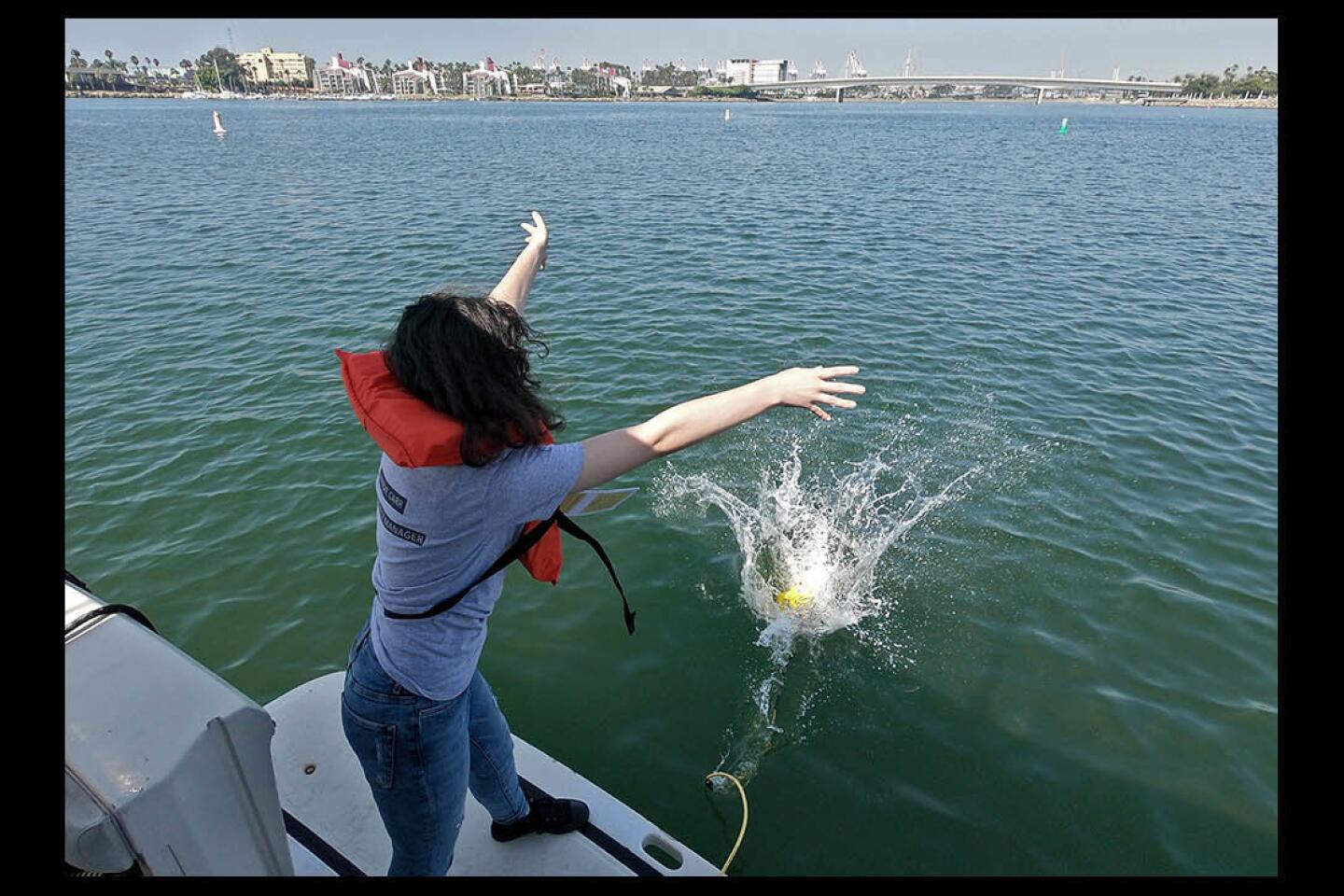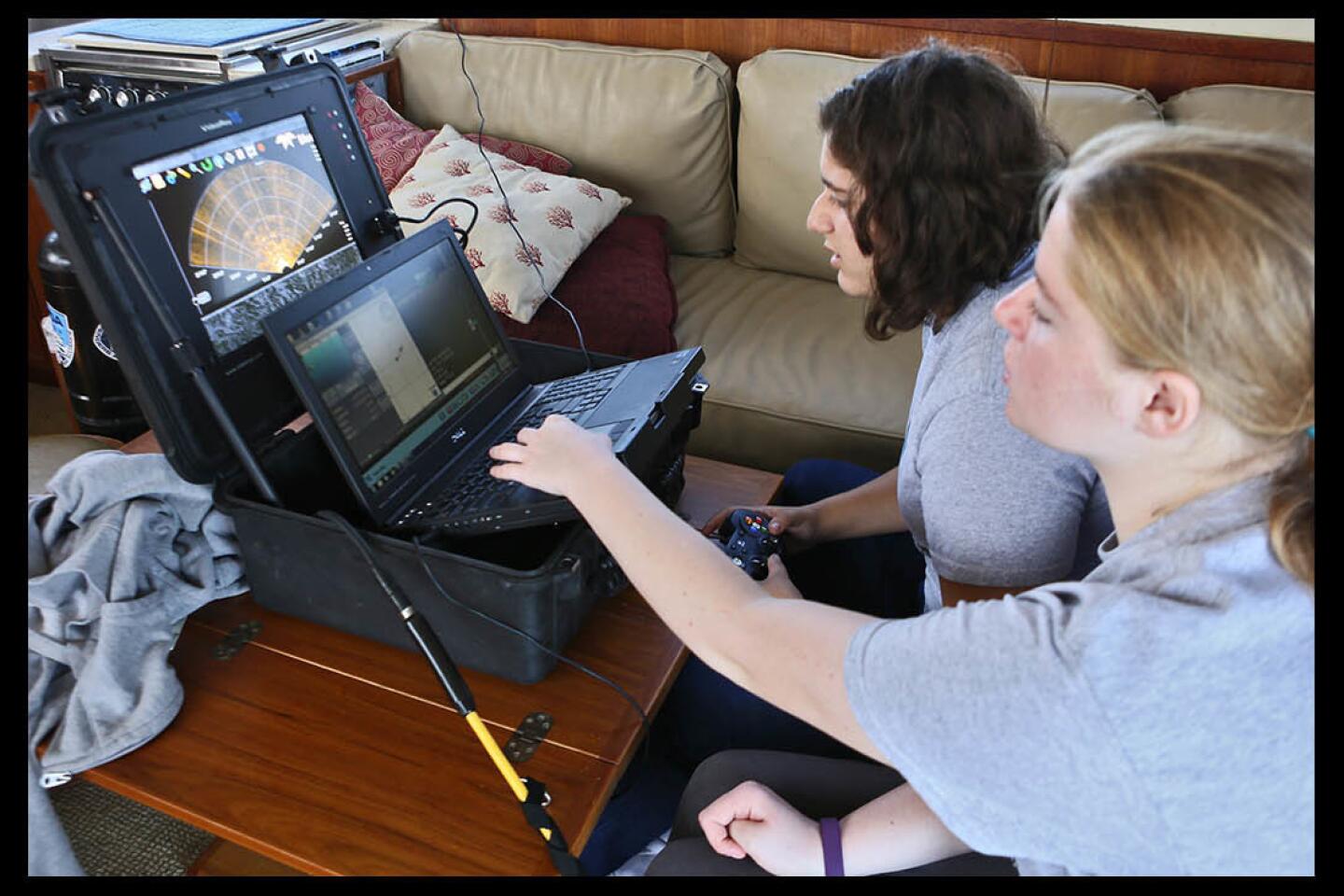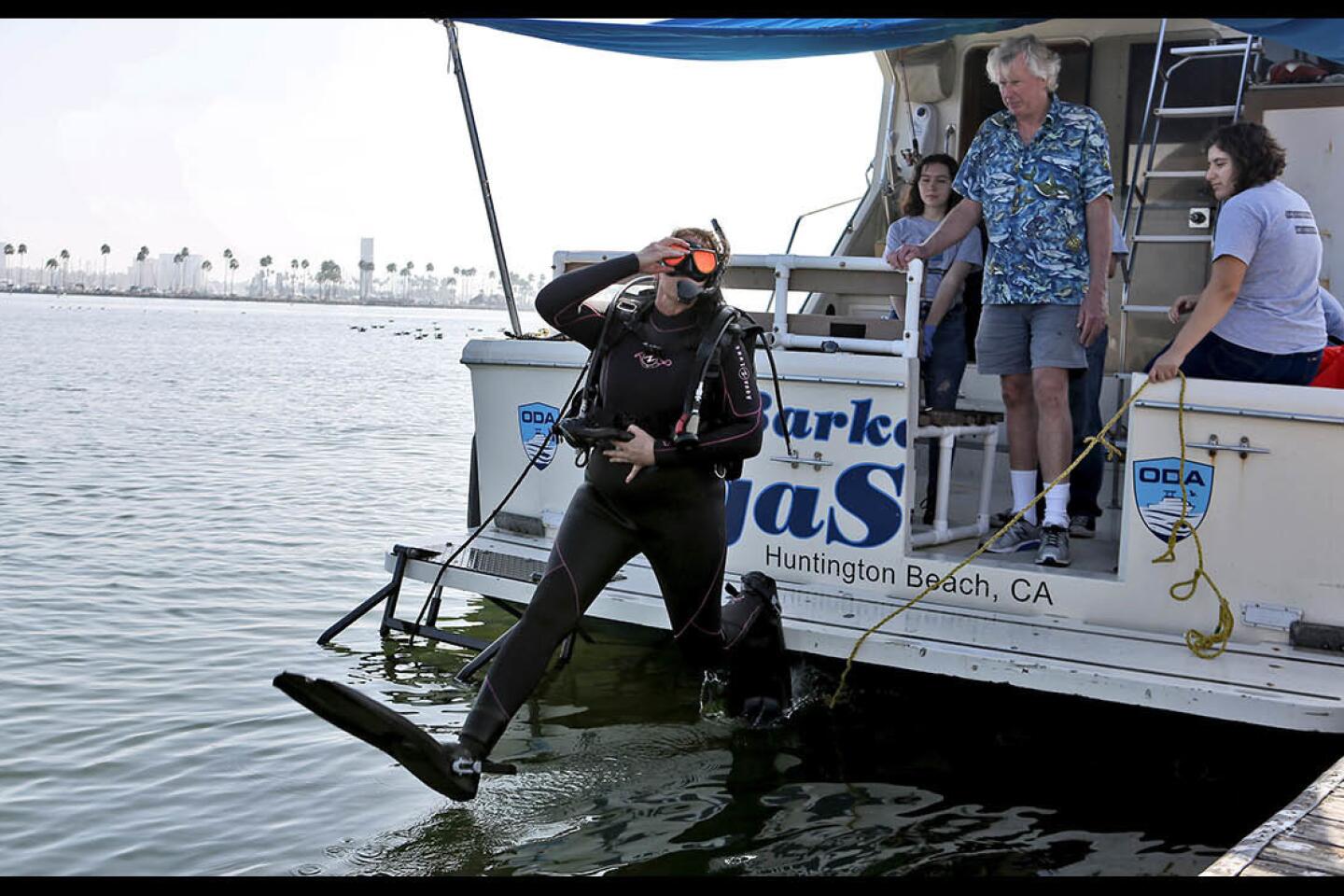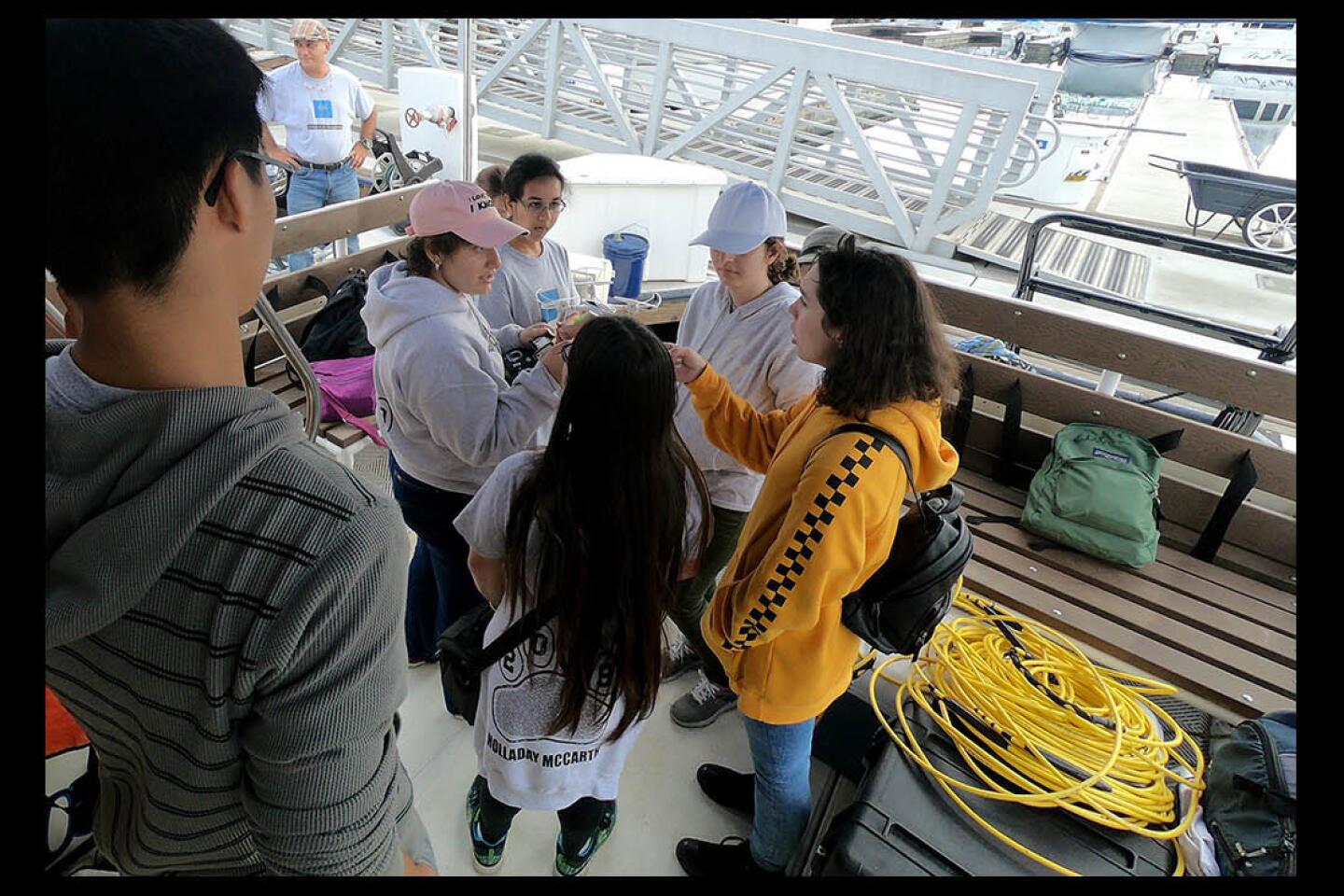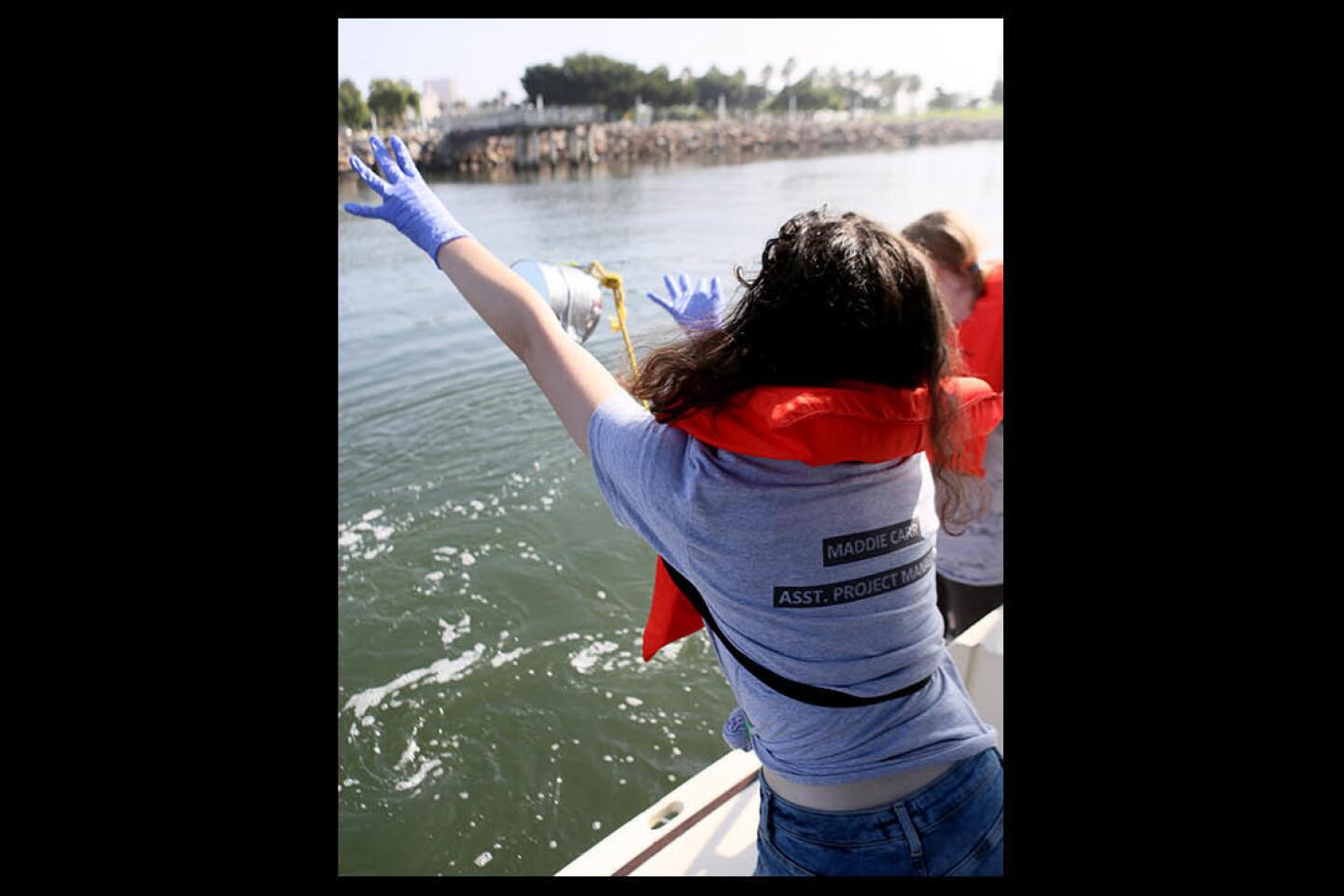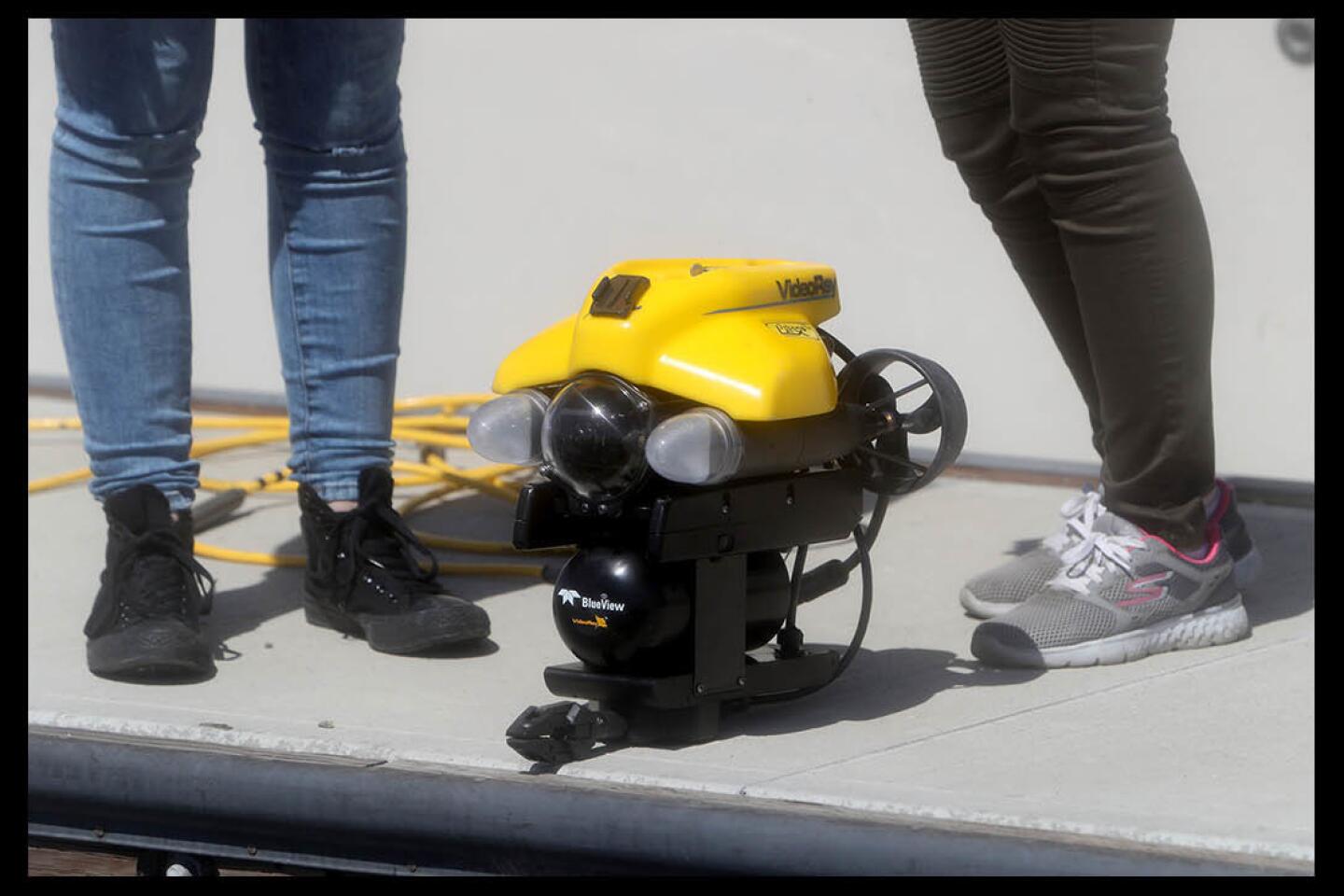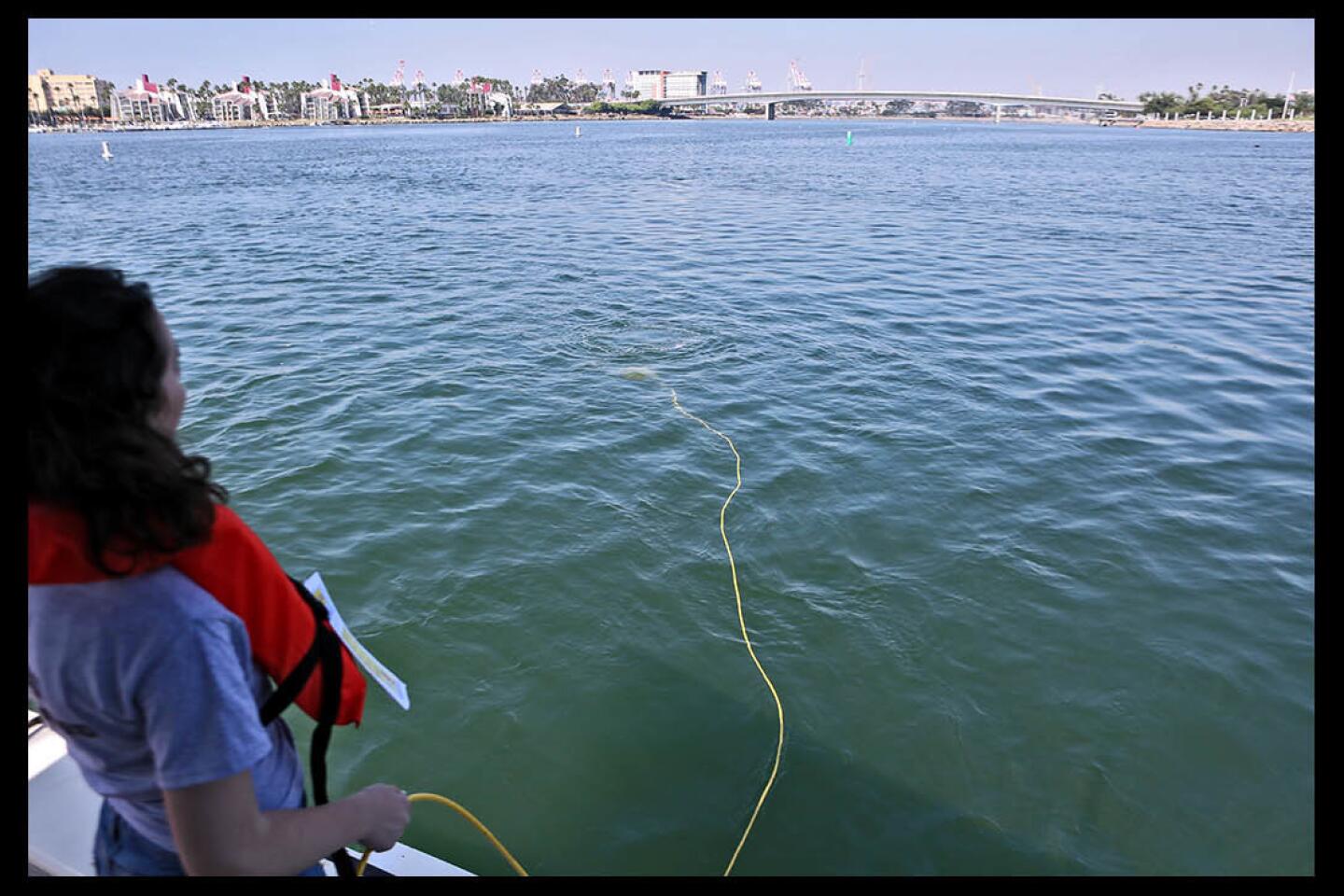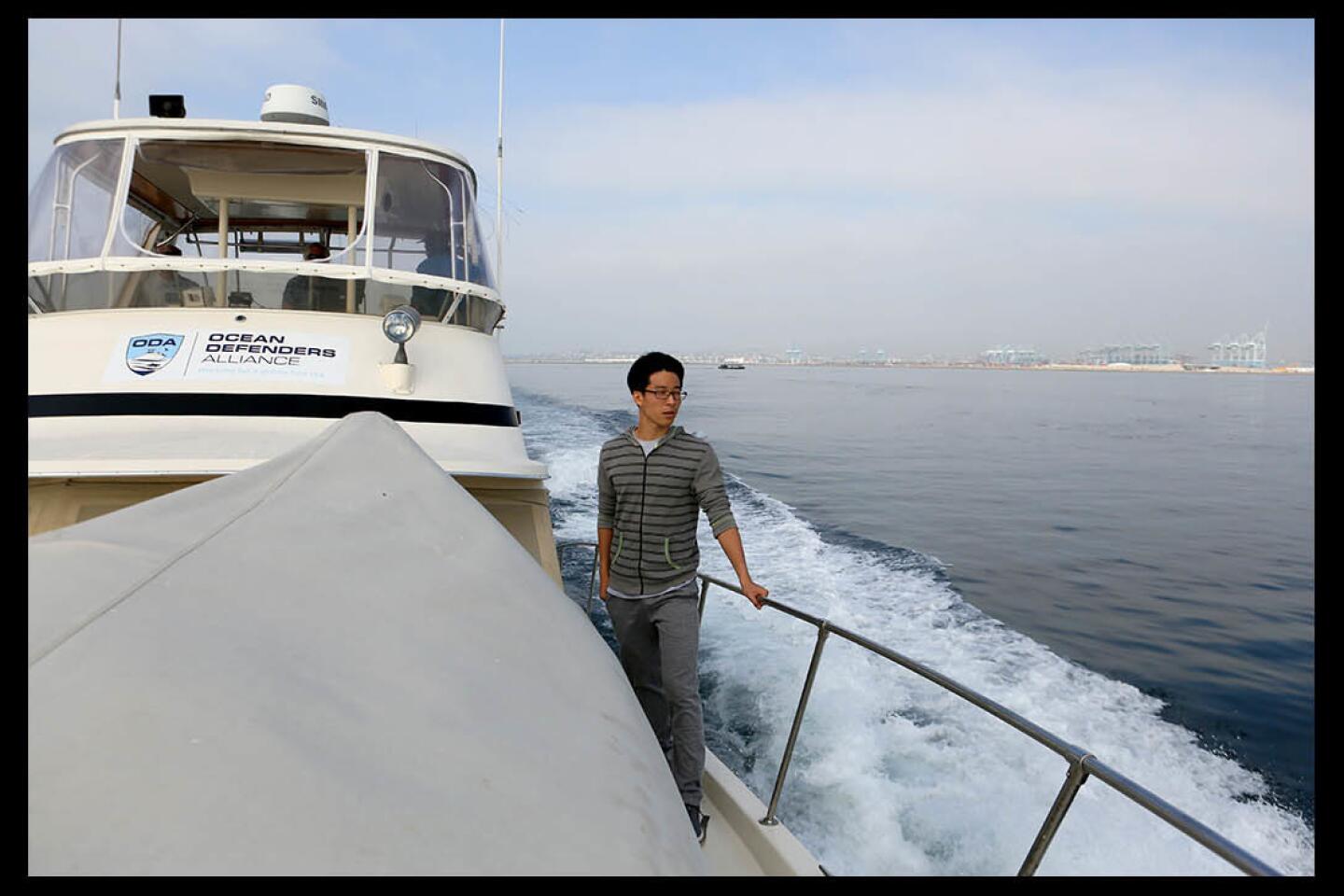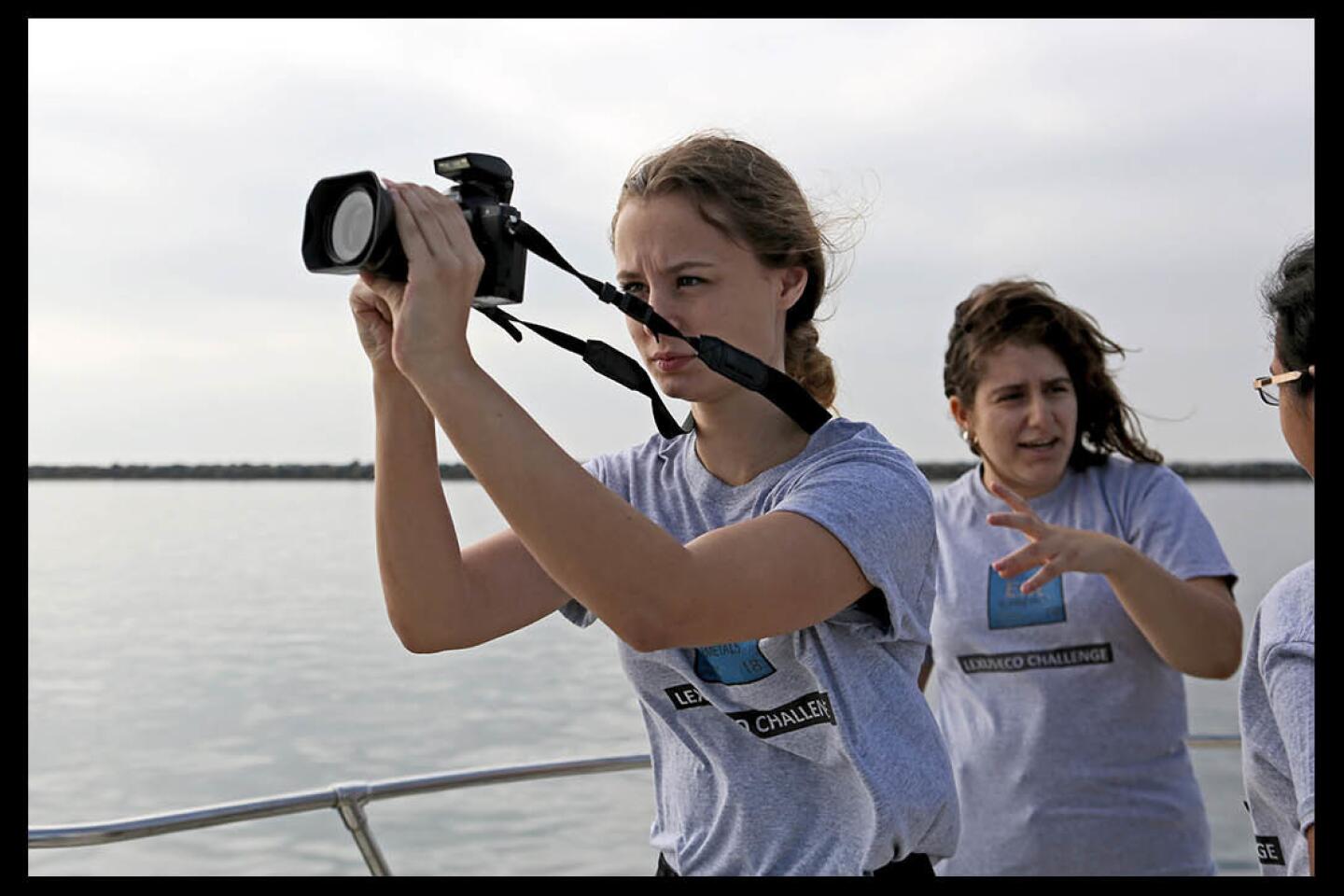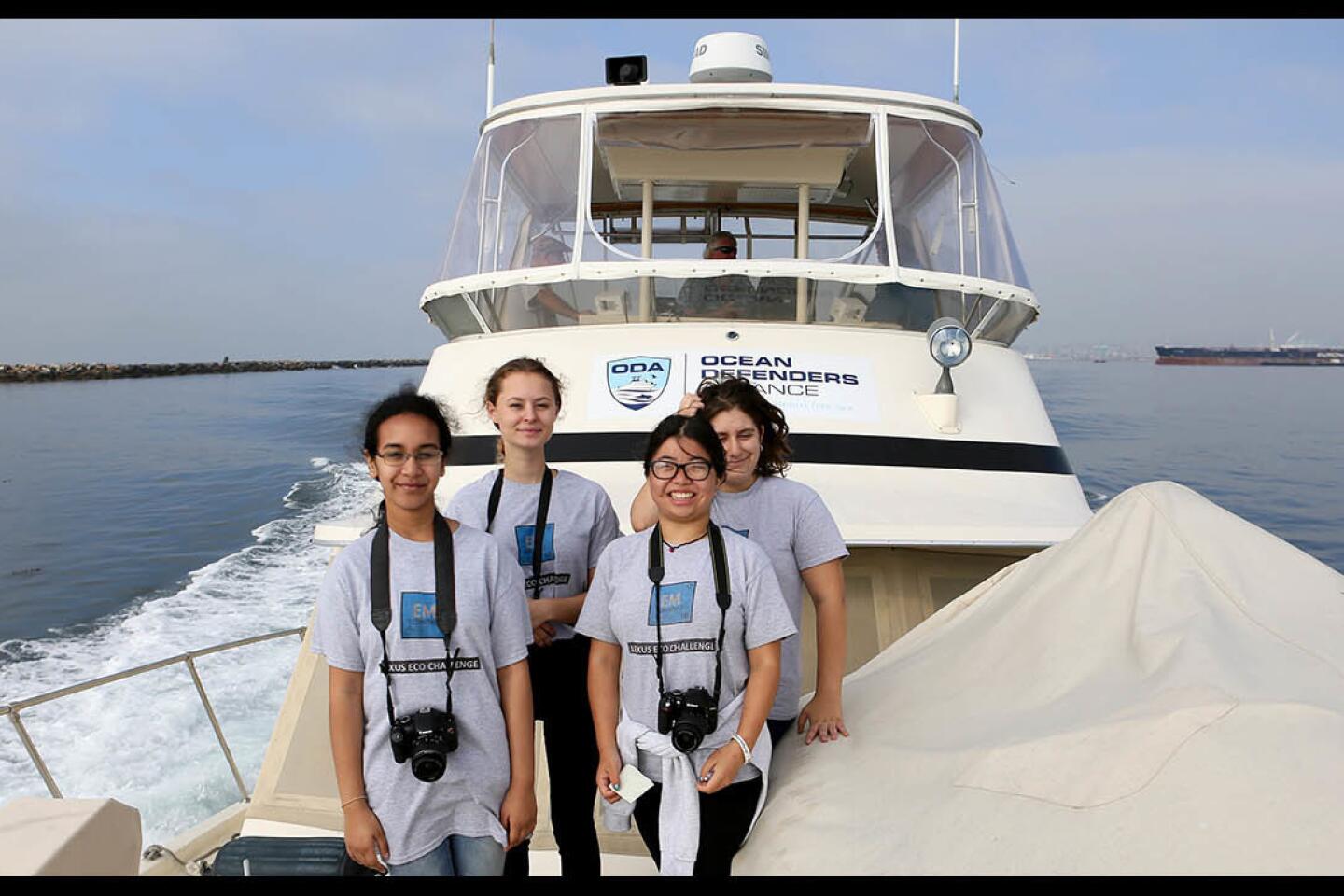Clark Magnet trip offers unexpected lesson in perseverance
- Share via
What had all the makings of a potentially disastrous trip turned into a teachable moment for students from Clark Magnet High School’s environmental geographic information systems, or GIS, class.
Eight students, along with instructor Dominique Evans-Bye and a few others, traveled to the mouth of the Los Angeles River in Long Beach via boat from San Pedro Thursday morning.
The goal was to collect sediments where pollution was highest, map out those areas and test for contaminants.
Instead, the group suffered a drone failure, never received a vital digging apparatus, lost a piece of test equipment, had a rope nearly choke an engine propeller and even saw their teacher suffer a flesh wound.
With a list of reasons to be dispirited, Evans-Bye was instead buoyant.
“This is what real research looks like,” she said. “Things don’t always go as planned. Even though we had contingency plans for contingency plans, sometimes it’s not enough.
She added, “The kids are handling it really well and they’re just not giving up. They’re coming up with new dates to come back. I’ve scheduled the labs, and we’re getting ready for the next trip.”
The voyage on Thursday was part of the land-and-water challenge taken by the GIS class as it competes in the Lexus Eco Challenge. The challenge is a nationwide science, technology, engineering and math, or STEM, contest for middle- and high-school students in which winning teams can earn part of $500,000 in prize money.
This is what real research looks like. Things don’t always go as planned.
— Clark Magnet High teacher Dominique Evans-Bye
Evans-Bye previously guided a group of students to the river during the 2006-07 school year. That group tested for 17 heavy metals and found that nearly every metal exceeded safety limits for marine sediments, with mercury and lead being the worst.
“This was sort of an update of the old project since we have the previous maps from them,” student Shaye Holladay McCarthy said. “We wanted to create our own data with our own samples.”
Though the GIS class had been planning the outing for months, they were unable to gain permission for a floating science laboratory from the Los Angeles County Office of Education because of paperwork issues.
So, Evans-Bye turned to the second option, which was to secure passage on the LegaSea, a craft piloted by Kurt Lieber of the Ocean Defenders Alliance.
The original plan called for Evans-Bye’s class to retrieve sediment with a Van Veen Grab Sampler, an underwater scooper she purchased online earlier in the week.
The majority of samples were to be submitted to the Institute for Integrated Research in Materials, Environments and Society, located at Long Beach State, for testing. A smaller portion was to be sent to Crescenta Valley High for DNA testing.
However, that plan never materialized because the grab sampler did not ship to Clark Magnet by Thursday morning.
The class improvised and used a rope, bucket and set of weights, but that method failed when the bucket ripped off the rope and was lost during the sample-collecting process.
The suddenly free rope then wrapped around one of the boat’s propellers, prompting Lieber to shut off the engine and head to a mooring.
Evans-Bye was forced to put on a dive suit, jump into the not-so-sterile waters and cut the rope from the propeller. In the process of returning back to the boat, the veteran teacher sliced her thumb, though the injury was minor.
While the group didn’t collect samples, it successfully tested its $70,000 underwater remote-operated vehicle, named Johnny Lex, and utilized sonar scans.
Also, while the drone belonging to the class malfunctioned, a $1,000 Mavic Pro Drone owned by Whittier Rio Hondo College geospatial instructor Warren Robert provided mapping services.
On top of the experience of being at sea, two GIS students — Anna Feddersen and Madalynn Carr — also received hands-on training from Lieber by helping the captain tie and moor the boat.
“It was quite a thrill because your adrenaline goes up,” Feddersen said.
Carr added, “It was nerve-wracking and fun because the boat would drift off and you had to jump [back into the boat], otherwise you’d fall into the water.”
Despite the setbacks, the GIS class, which included Shreeja Guntireddy, Paul Kim, Emily Woods, Serli Khanbabaci and Shelia Mgrtichian, counted themselves fortunate.
“Ms. Evans-Bye is amazing,” Woods said. “She got all this — got us the boat, got us the equipment — she put all this together. We’re lucky to have someone like her teaching us.”
